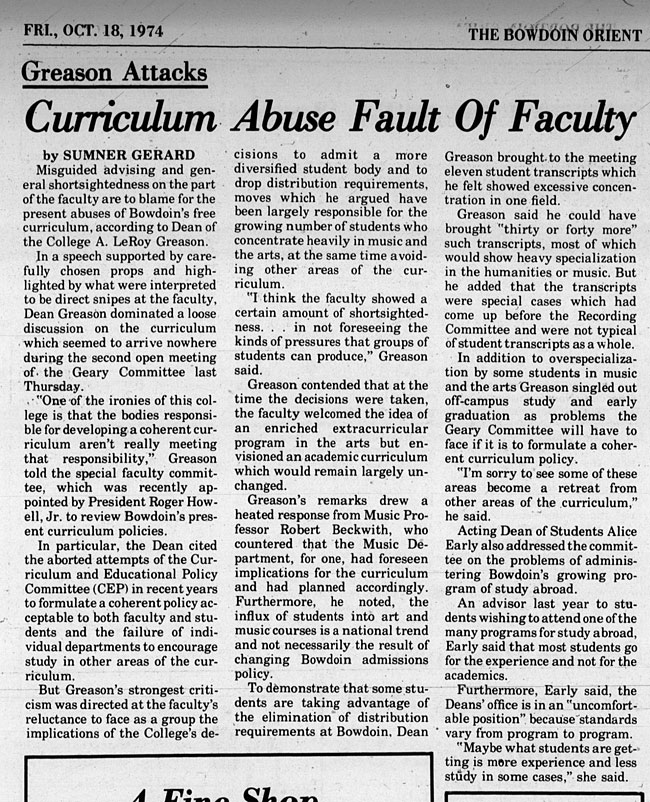In 1969, two years prior to the admission of women to the College, Bowdoin decided to drop its distribution requirements. After that decision, and then in light of the transition to coeducation, Bowdoin’s curriculum underwent significant scrutiny in the early 1970s. In this Orient article, (Document SW, 34), the author documents Dean of the College, A. LeRoy Greason’s argument that the “faculty are to blame for the [at the time] present abuses of Bowdoin’s free curriculum,” a curriculum he felt had no “coherent policy acceptable to both faculty and students.”
The author notes that Greason’s argument concerning the curriculum is particularly relevant to, if not rooted in, Bowdoin’s recent transition to coeducation. The author writes that “Greason’s strongest criticism” concerned the faculty’s inability to confront the “implications of the College’s decisions to admit a more diversified student body and to drop distribution requirements.” Greason asserts that the combination of these two decisions is responsible for the “growing number of students who concentrate heavily in music and the arts” and avoid “other areas of the curriculum.” Consequently, Greason contends that in failing to develop a “coherent curriculum,” or a curriculum that mandates taking classes in a variety of disciplines, the faculty is essentially preventing the student body from receiving the true breadth of focus a liberal arts education should warrant.
In general, Greason’s argument that the faculty has failed to address the curricular effects of dropping the distribution requirements and recently admitting women demonstrates one of the ways Bowdoin’s shift to coeducation complicated the College’s understanding of how to best and appropriately provide a diverse liberal arts education. Although Bowdoin did not reverse its move toward coeducation, it did retract its decision to drop distribution requirements. Currently, however, male and female students at Bowdoin must take courses in five different distribution areas in order to graduate.
